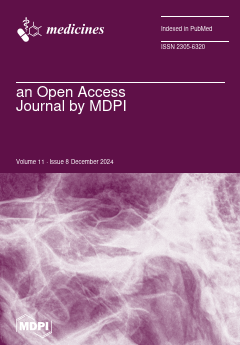Background: A series of 3,5-benzylidene-4-piperidones,
1a–
n, were prepared to evaluate the hypothesis that the placement of different groups in the ortho-location of the aryl rings led to compounds with greater cytotoxic potencies than structural analogs.
Methods: The bioevaluation of
1a
[...] Read more.
Background: A series of 3,5-benzylidene-4-piperidones,
1a–
n, were prepared to evaluate the hypothesis that the placement of different groups in the ortho-location of the aryl rings led to compounds with greater cytotoxic potencies than structural analogs.
Methods: The bioevaluation of
1a–
n was undertaken using human Molt/4C8 and CEM cells as well as murine L1210 cells. Correlations were sought between the interplanar angles θ
A and θ
B and the cytotoxic potencies. A QSAR analysis was also undertaken. In order to evaluate whether these compounds demonstrated greater toxicity to neoplasms than non-malignant cells,
1a–
n were evaluated against HSC-2, HSC-3, HSC-4 and HL60 neoplasms as well as non-malignant HGF, HPC and HPLF cells.
Results: A positive correlation was noted between the interplanar angle θ
A of one of the aryl rings and the adjacent olefinic linkage with IC
50 values in the Molt4/C8 screens. The QSAR analysis revealed a positive correlation between the Hansch pi (π) value of the aryl substituents and the IC
50 values of the compounds towards the Molt4/C8 and CEM cells. The dienones in series
1 demonstrated higher tumor-selective toxicity towards HSC-2, HSC-3, HSC-4 and HL-60 neoplasms than HGF, HPC and HPLF cells.
Conclusions: The bioevaluations revealed some support for greater cytotoxic potencies to be displayed by compounds having ortho-substituents.
Full article




